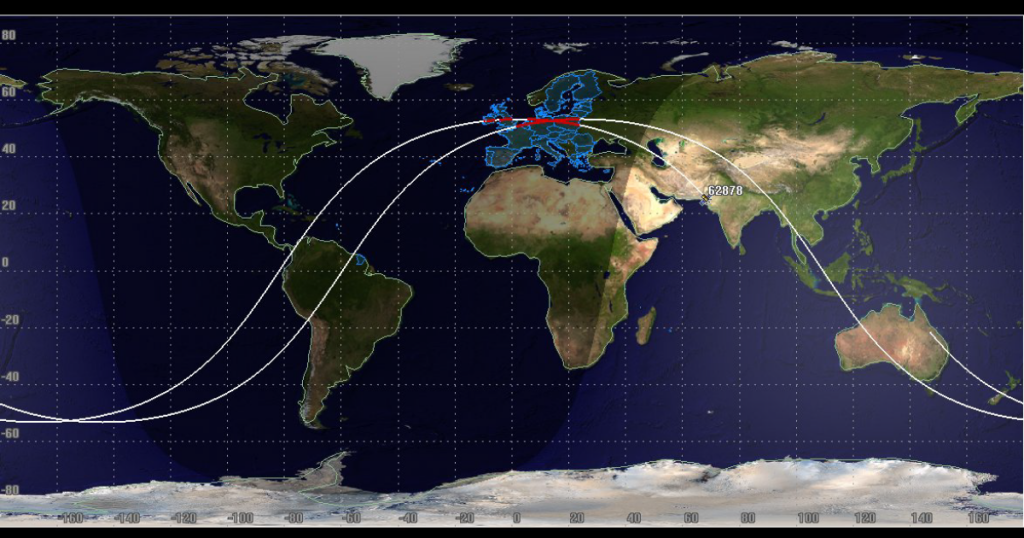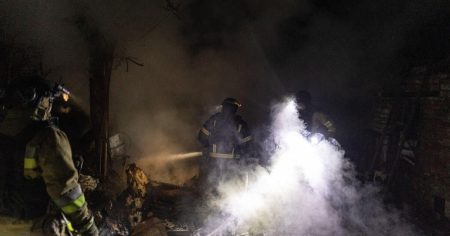SpaceX Launches 21 New Starlink Satellites, Debris Re-Enters Earth’s Atmosphere Over Poland
In early February 2025, SpaceX successfully launched 21 new Starlink satellites into low Earth orbit as part of its ongoing mission to expand its satellite constellation. The launch, conducted from Vandenberg Air Force Base in California, utilized a Falcon 9 rocket, which has become a reliable workhorse for SpaceX’s operations. The Starlink program aims to provide high-speed internet connectivity to remote and underserved areas around the world, and this launch marked another step toward achieving that goal. However, the mission took an unexpected turn when debris from the Falcon 9 rocket re-entered Earth’s atmosphere over Poland, sparking both curiosity and concern among local residents and space enthusiasts alike.
Debris from Falcon 9 Rocket Re-Enters Atmosphere, Generates Spectacular Sight
On February 19, 2025, at approximately 4:46 GMT, a piece of debris from the Falcon 9 rocket re-entered Earth’s atmosphere and was spotted in the skies over western Poland. The Polish Space Agency (POLSA) confirmed that the debris was part of the Falcon 9 R/B rocket stage, which had been launched just 18 days earlier. Witnesses reported seeing luminous trails in the sky, which were captured in videos shared online. The debris, described as being around 1.5 meters by 1 meter (5 feet by 3 feet), was later found near the city of Poznan, with a second similar-sized object discovered in a nearby forest. Fortunately, no casualties or damage were reported, but the incident highlighted the growing issue of space debris and its potential risks.
Authorities Investigate Debris, Confirm Origin from SpaceX Rocket
Local authorities, including police and firefighters, quickly responded to the discovery of the debris, working to determine its origin. Lukasz Paterski, a police spokesman, noted that it was possible the debris came from a SpaceX rocket, a theory later confirmed by POLSA. The agency stated that the Falcon 9 R/B rocket stage had made an uncontrolled re-entry into the atmosphere, a rare but not unheard-of occurrence in space exploration. POLSA also revealed that it was in communication with SpaceX, which is owned by Elon Musk, to discuss the incident and its implications. The debris was identified as possibly being part of a Falcon 9 fuel tank, based on its composite material and design.
Public Reaction and Concerns About Space Debris
The incident sparked widespread interest and concern among the public, particularly in light of the growing number of satellites and rocket launches in recent years. Researchers have warned that space debris re-entering Earth’s atmosphere could become an increasingly significant problem, posing risks to aircraft and populations on the ground. For instance, in late December, space debris weighing over 1,000 pounds crashed into a village in Kenya, according to that country’s space agency. The Polish incident served as a stark reminder of the potential dangers associated with space debris, even as the global space industry continues to expand.
SpaceX and the Broader Implications of Space Debris
While SpaceX has been at the forefront of advancing space technology and reducing the cost of access to space, incidents like this highlight the challenges of managing space debris. The company has made strides in reusability, with its Falcon 9 rockets being partially reusable, but the issue of debris remains a complex problem for the entire space industry. As more satellites and spacecraft are launched into orbit, the risk of collisions and uncontrolled re-entries grows, posing a threat not only to Earth but also to operational satellites and the International Space Station. This incident underscores the need for international cooperation and stricter regulations to mitigate the risks associated with space debris.
The Future of Space Exploration and the Need for Sustainable Practices
The Polish debris incident serves as a reminder of the delicate balance between advancing space exploration and ensuring the safety of both Earth and orbit. As companies like SpaceX continue to push the boundaries of what is possible in space, it is imperative that sustainable practices and debris mitigation strategies are prioritized. This includes designing satellites and rockets with re-entry plans in mind, improving tracking systems for space debris, and fostering collaboration between governments and private entities to address the issue. Only by taking proactive steps can the space industry ensure that the wonders of space exploration do not come at the expense of the planet we call home.















